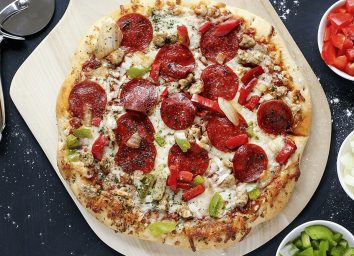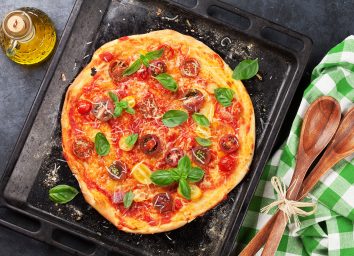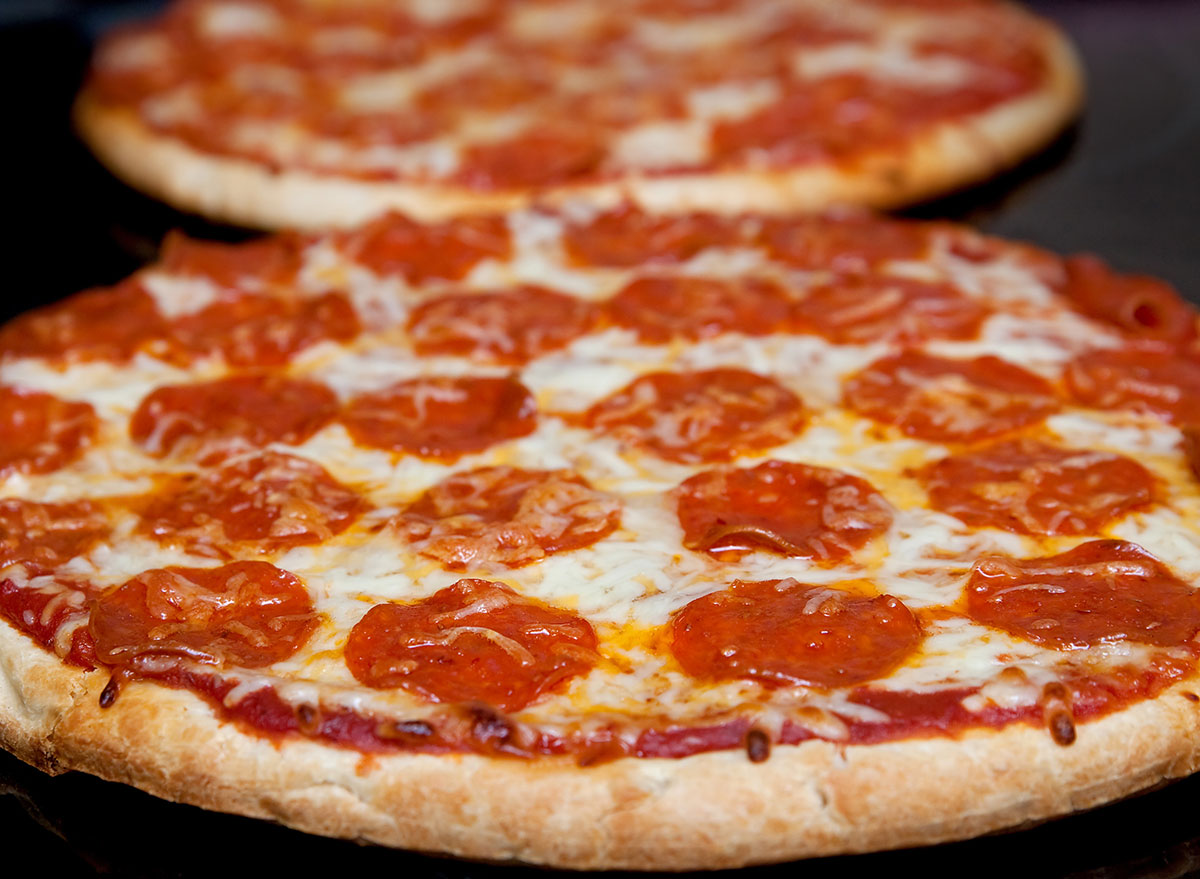
Pizza is one of the most popular foods in America. It's a feel-good food that is easy to grab-and-go for a price that's just right. When you're hungry, you can usually find a pizzeria to grab a slice for a few bucks. You can also stash frozen pizza in your freezer and pop it in the oven for about 10 minutes—and dinner is done in a flash. (As are leftovers! Here's how to reheat pizza like a pro.)
But what if you're including pizza in your diet regularly—is there such a thing as too much pizza? What are the potential benefits and drawbacks to your body and overall health?
Sign up for our newsletter to get the latest food news delivered straight to your inbox.
Your risk for heart disease may increase

If you love pizza and balance a slice weekly with vegetables like a salad, it can certainly be a part of a healthy diet. However, if you start eating three or four slices (or more!) on a regular basis that is where your diet can have health consequences.
One slice of plain cheese pizza can weigh in at approximately 400 calories—more if you top it with pepperoni or other high fat toppings. Pizza also tends to have hefty amounts of artery-clogging saturated fat from the cheese and processed meat, which can increase your risk for heart disease. The 2015–2020 dietary guidelines for Americans recommends no more than 10% of your total daily calories coming from saturated fat. One slice of store-bought pizza can have approximately 20% of the daily recommended amount of saturated fat. Eating numerous slices regularly can push your saturated fat intake way over the recommended limit. Over time, this can lead to a higher risk for high disease. And here's what happens to your body if you're chasing your pizza with soda on the regular.
You could quickly gain weight
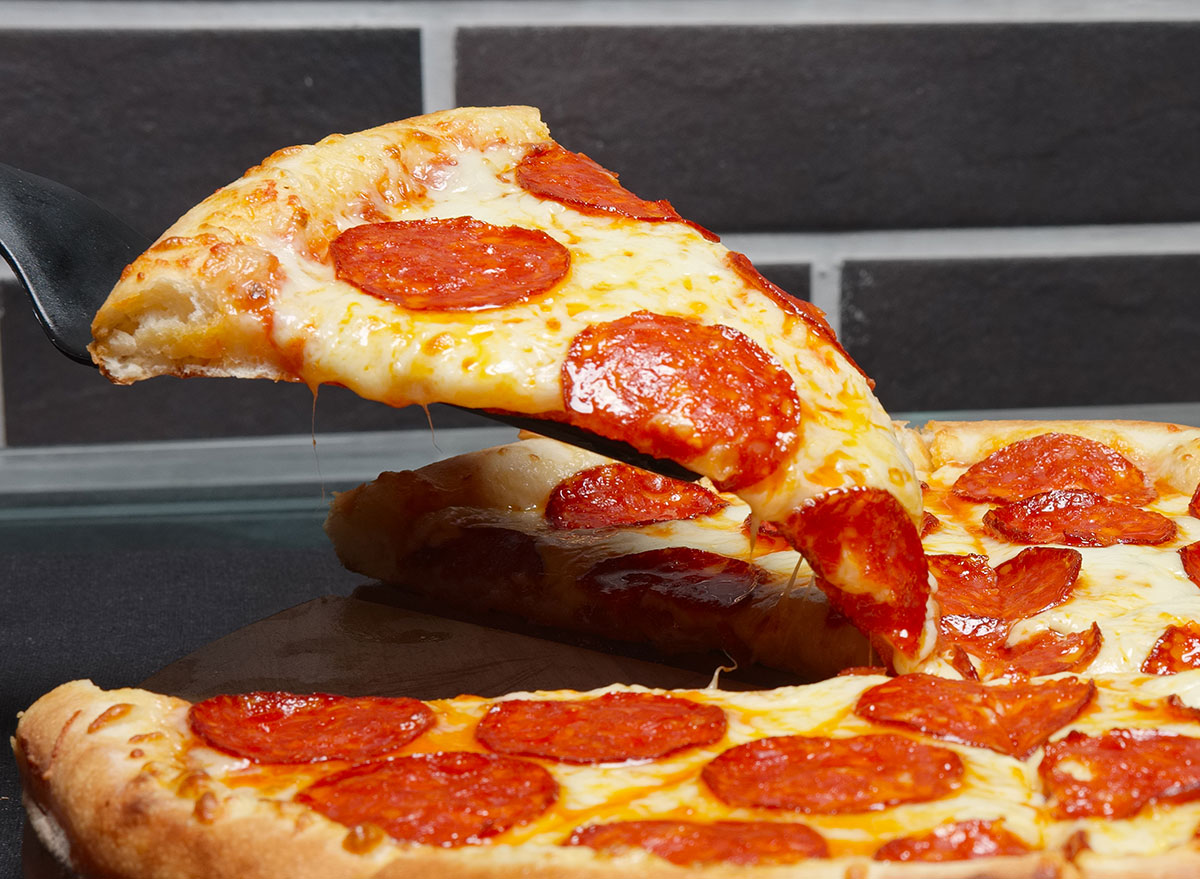
With approximately 400 calories per store-bought slice, eating two or three slices of pizza will end up adding 800 to 1,200 calories to your day. Opt for pepperoni and that can increase the calorie-count even more. Given that a person should be consuming a diet of 2,000 calories on average, the plain slices add up to between 40 to 60% (or more!) of your daily calories—and that's without the other two meals and any snacks. Over-consuming calories regularly leads to weigh gain over time. Get our 29+ Best Healthy Pizza Recipes for Weight Loss.
Your diet may lack fiber
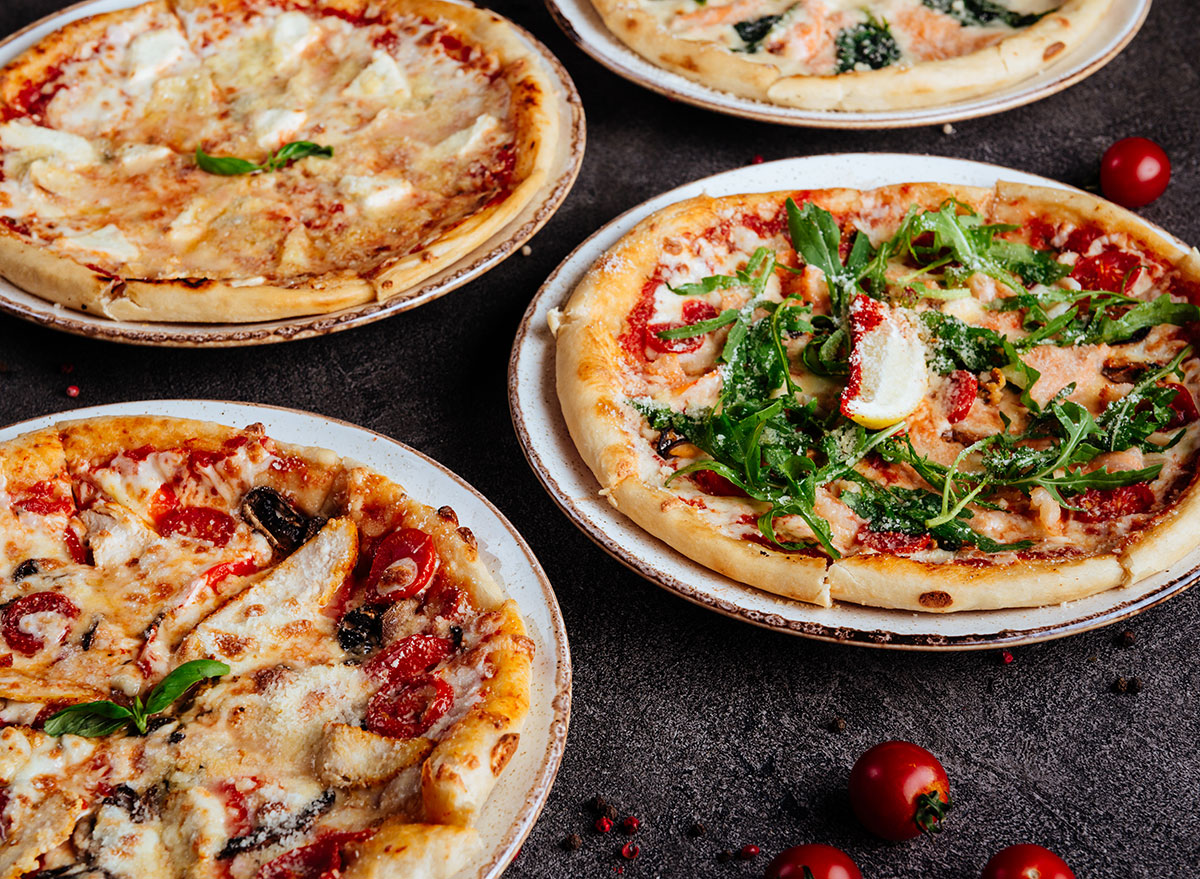
The 2015–2020 dietary guidelines for Americans recommend that half of the grains we eat should be whole. Pizza crust tends to be made from enriched wheat flour and doesn't contain much fiber. If you're eating pizza regularly and filling up on refined grains, you're likely not getting the recommended amount of whole grains in your diet. Getting enough fiber in your diet helps maintain a healthy gastrointestinal tract and has other benefits such as helping to lower the risk for colon cancer and helping to reduce high cholesterol. Craving pizza? Here are the Worst Pizzas to Order from Domino's and Papa John's Right Now.
You may have an increased risk of cancer
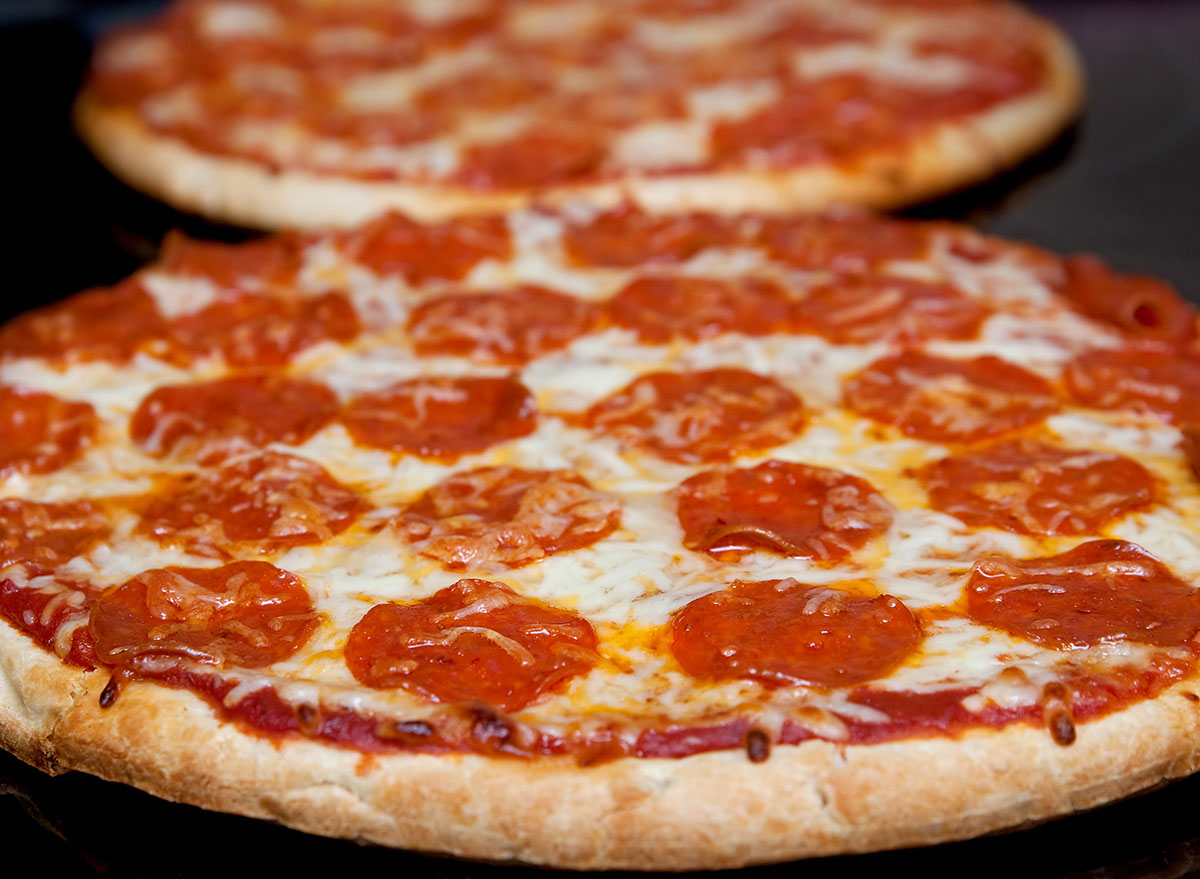
Piling your pizza with high-fat processed meats like pepperoni, bacon, and sausage, can increase the risk for certain forms of cancer, especially if you eat pizza often. If you're craving pizza, you're better off swapping those high fat meats for some fiber-filled vegetables instead. Here are 100 of the Worst Foods Linked to Cancer.
You may reap more benefits of lycopene
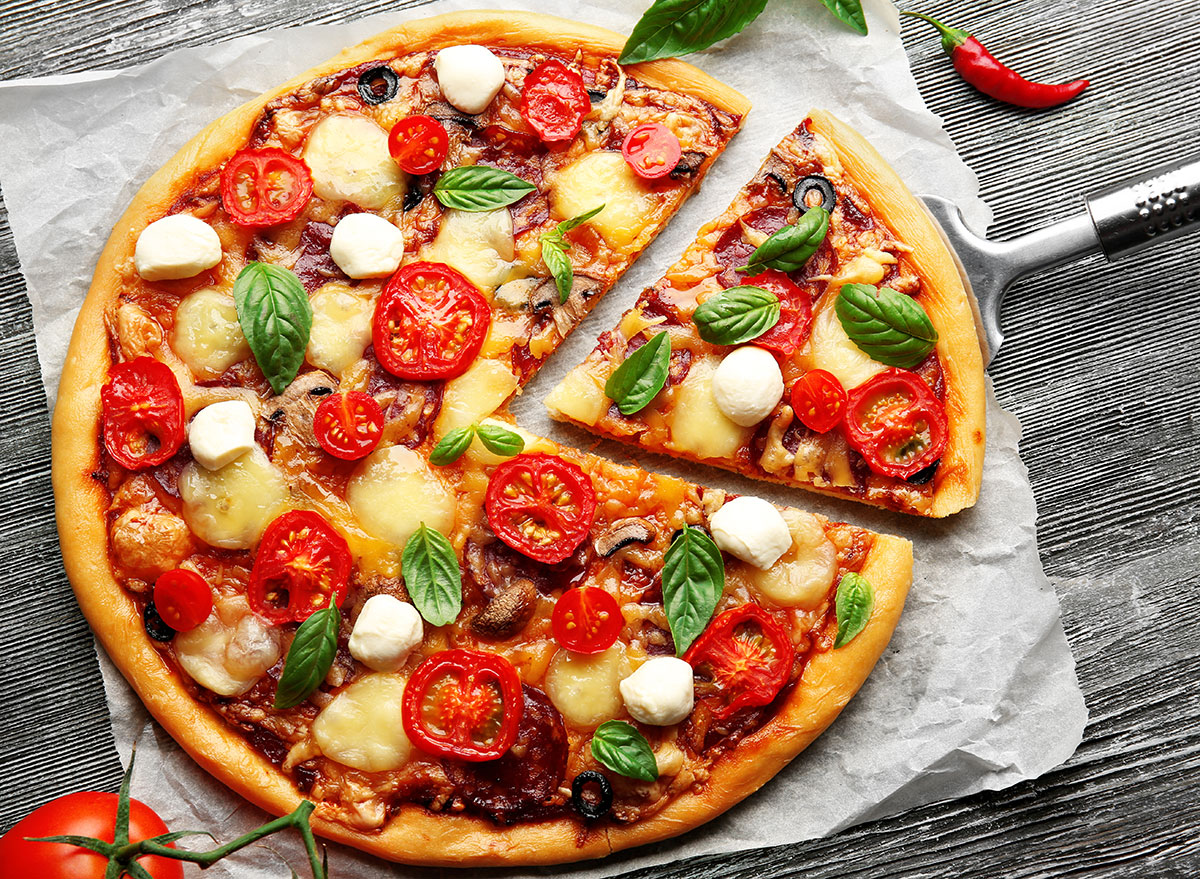
Lycopene is a phytonutrient, or natural plant compound, that tends to be higher in processed tomato products like tomato sauce compared to fresh tomatoes. Eating pizza regularly means that you're taking in lycopene, an antioxidant that may help protect our healthy tissues from damage from substances known as free radicals. Research also shows that lycopene may help reduce the risk for cardiovascular disease, prostate cancer, and macular degeneration (a condition that leads to poor eyesight as you age). In conclusion, your pizza toppings can play a big role in how healthy your pizza is.

